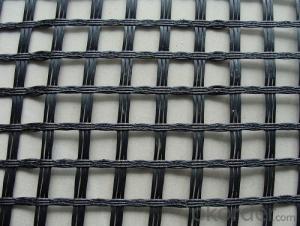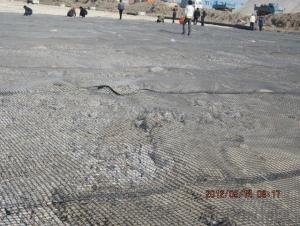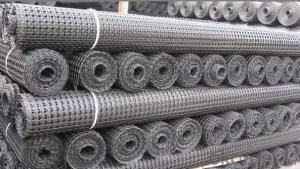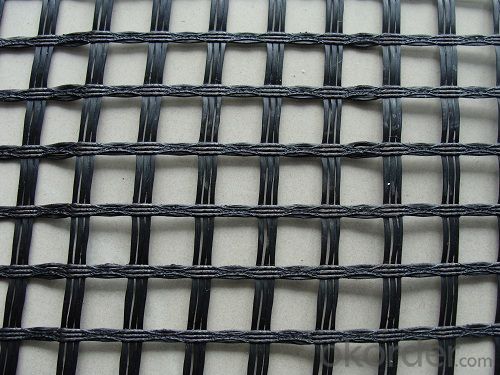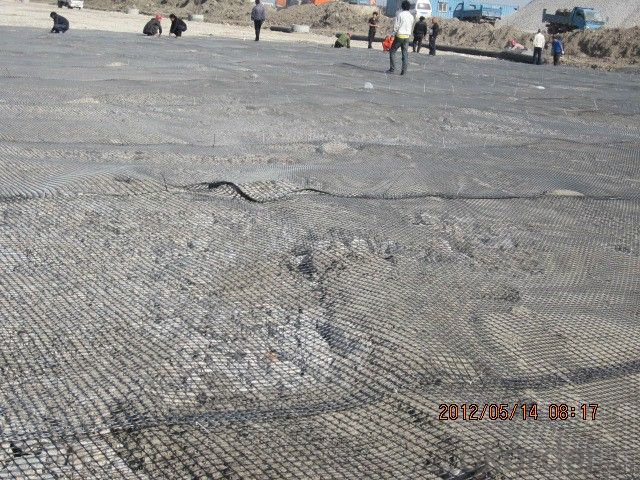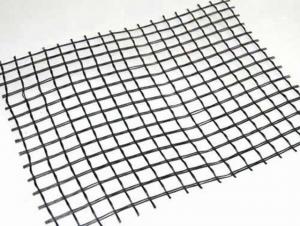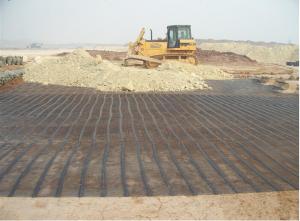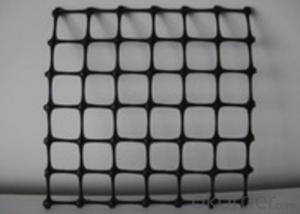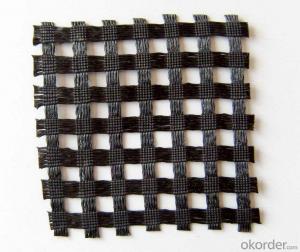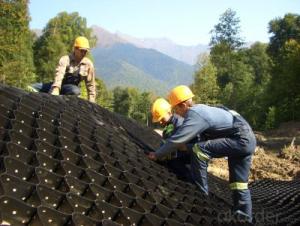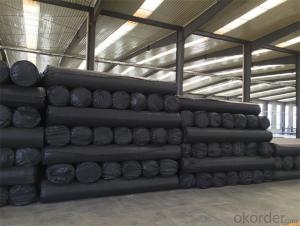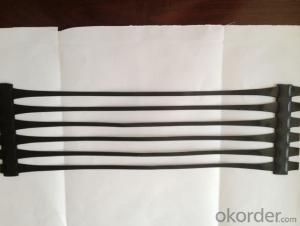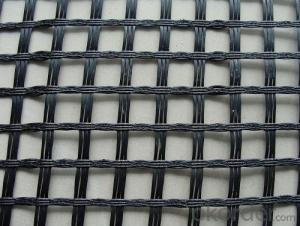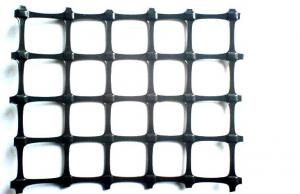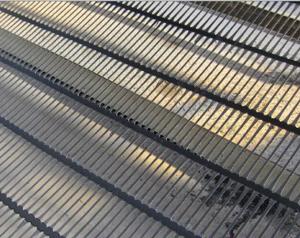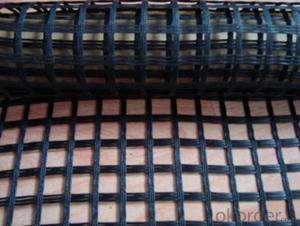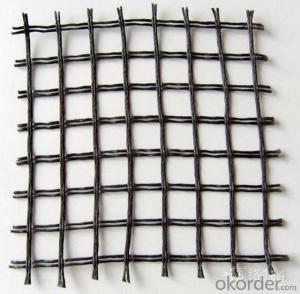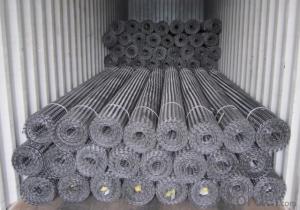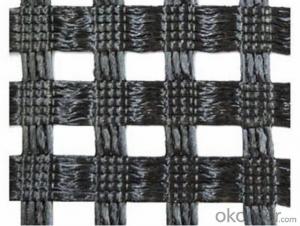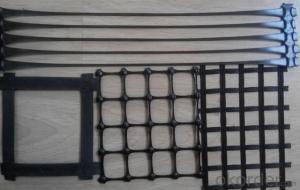HDPE Biaxial Geogrid for Construction Usage - Geogrids Noise Reduction
- Loading Port:
- Qingdao
- Payment Terms:
- TT or LC
- Min Order Qty:
- 10 roll
- Supply Capability:
- 5000 roll/month
OKorder Service Pledge
OKorder Financial Service
You Might Also Like
HDPE Biaxial Geogrid
Quick Details
Type: Geogrids
Place of Origin: Shandong, China (Mainland)
Material: Plastic-Steel,HDPE/PP
Model Number: TGDG
color: black etc.
length: 50-100m(or at request)
sample: available
Packaging & Delivery
Standard exporting package , or as request |
within 10 days after the advanced payment |
Specifications
HDPE biaxial geogrid
1.Tensile strength: 15~100KN/M
2.Color:black etc.
3.Material:PP/PE
4.Certifictaion:CE/ISO9001,14001
HDPE biaxial geogrid :
Picture

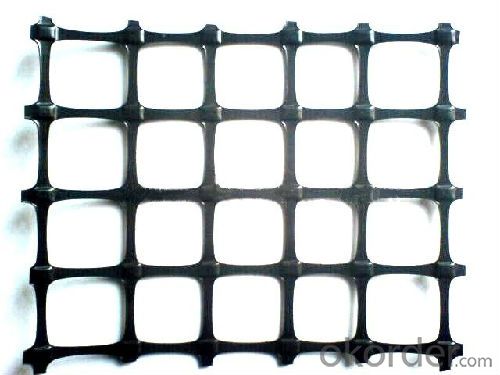
- Q: Can geogrids be used in temporary retaining structures?
- Yes, geogrids can be used in temporary retaining structures. Geogrids are commonly used in construction projects to reinforce soil and provide stability to retaining walls and structures. They are designed to withstand high tensile forces and can be easily installed and removed, making them suitable for temporary applications.
- Q: How to distinguish from the appearance of plastic geogrid and fiberglass geogrid
- Appearance difference is obvious,
- Q: What are the advantages of using geogrids in ground improvement for seismic stability?
- Using geogrids in ground improvement for seismic stability offers several advantages. Firstly, geogrids enhance the strength and stability of the soil by providing reinforcement. They distribute the applied loads more evenly, reducing the potential for soil settlement and minimizing the risk of ground failure during seismic events. Secondly, geogrids improve the overall bearing capacity of the soil. By confining and interlocking with the soil particles, they increase the shear resistance and prevent excessive lateral movement of the soil, thus enhancing the stability of the ground. Furthermore, geogrids act as a barrier against soil erosion and prevent the loss of soil particles during earthquakes. They help maintain the integrity of the soil structure, reducing the potential for landslides and slope failures. Moreover, geogrids are flexible and adaptable, making them suitable for a variety of ground conditions. They can be easily installed and customized to fit the specific project requirements, allowing for efficient and cost-effective ground improvement solutions. Overall, the use of geogrids in ground improvement for seismic stability offers significant advantages, including enhanced soil strength, improved bearing capacity, erosion control, and adaptability, ultimately resulting in a safer and more stable foundation for structures in earthquake-prone areas.
- Q: Who knows how much the staggered distance of the lap joint of the geogrid is?
- When the geotextile is used as the anti filter layer, it should be laid on the bottom and the sides of the trench wall, and the top cover of the geotextile is reserved,
- Q: What is the recommended overlap distance for geogrid seams?
- The recommended overlap distance for geogrid seams typically ranges from 6 to 12 inches.
- Q: Are geogrids suitable for use in reinforced retaining walls?
- Yes, geogrids are suitable for use in reinforced retaining walls. Geogrids provide effective reinforcement by improving soil stability, preventing wall failure, and increasing overall structural integrity of the retaining wall. They enhance the load-bearing capacity of the wall and help distribute the forces exerted by the retained soil, making it a reliable and durable solution for reinforced retaining walls.
- Q: What way to quickly cut the geogrid
- Unidirectional geogrid, 1 unidirectional Geogrid Reinforced Soft Foundation: Geogrid can rapidly improve the bearing capacity of the foundation and development of settlement control, can effectively load to the base of a wider upper limit on the road side, thereby reducing the base thickness, reduce project cost, shorten the construction period, prolong the service life.2, check the geogrid reinforced asphalt pavement or cement: Geogrid laying layer at the bottom of asphalt or cement, can reduce rutting depth, prolong the fatigue life of the pavement, but also can reduce the asphalt or cement pavement thickness, in order to save costs.
- Q: How do geogrids improve the stability of shorelines?
- Geogrids improve the stability of shorelines by providing reinforcement and preventing soil erosion. They are typically installed beneath the surface of the shoreline, creating a strong and stable foundation. Geogrids help distribute the load of the soil and wave forces, reducing the risk of slope failure or collapse. Additionally, they enhance the soil's resistance to erosion caused by waves, currents, or wind, ultimately preserving the shoreline's integrity and preventing further degradation.
- Q: What are the limitations of using geogrids?
- Geogrids have certain limitations that need to be considered. First, they are not suitable for all soil types and conditions, as they may not provide sufficient reinforcement or stability in certain situations. Additionally, geogrids are not effective in controlling erosion or preventing soil movement on their own; they need to be combined with other erosion control measures. Furthermore, installation and maintenance of geogrids can be complex and require expertise, making them more expensive compared to traditional soil stabilization methods. Finally, geogrids have a limited lifespan and may degrade over time, requiring replacement or repair.
- Q: What is the meaning of 80 in geogrid TGSG80
- A model can be viewed as a double grid
Send your message to us
HDPE Biaxial Geogrid for Construction Usage - Geogrids Noise Reduction
- Loading Port:
- Qingdao
- Payment Terms:
- TT or LC
- Min Order Qty:
- 10 roll
- Supply Capability:
- 5000 roll/month
OKorder Service Pledge
OKorder Financial Service
Similar products
Hot products
Hot Searches
Related keywords
